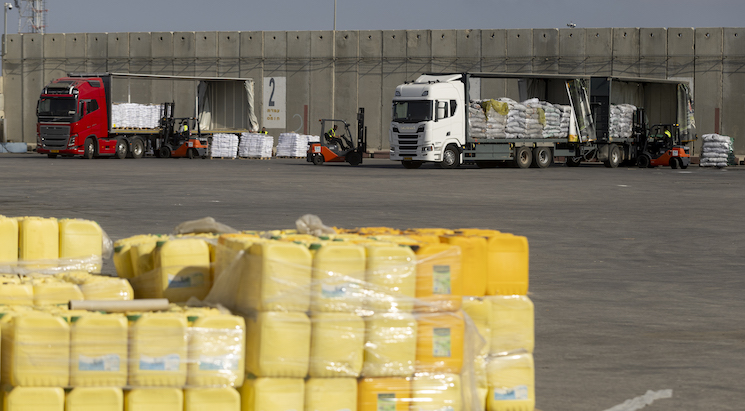Last month, the Washington Post ran a sensational accusation against the Israel Defense Forces, posting on social media that Israeli troops killed over 30 people by shooting into a crowd of Palestinians lining up to get food aid.
The Post had no way to verify this before reporting it. The accusation was worded in a way that obscured that the information came from Hamas, and the wording also indicated that the Post had at least confirmed the report. In fact, what the Post had printed was literal terrorist propaganda disguised as reporting.
This came less than two weeks after a pro-Palestinian activist murdered two young people at the Capital Jewish Museum, an act of violence spurred on by nearly two years of meritless accusations of Israeli crimes.
Two days later, the paper retracted its post drawing attention to the story and admitted that it didn’t know for sure whether the IDF shot anybody. Meanwhile, Hamas continues to maim and murder Palestinians who try to collect aid.
To say the Washington Post’s behavior was unethical and grossly irresponsible is to put it far too generously. Yet rather than serve as a cautionary tale for reporters, the story was an example of the new norm of media coverage of one organization in particular: the Gaza Humanitarian Foundation.
GHF is the America- and Israel-backed humanitarian distribution firm that feeds Gazan civilians but doesn’t funnel its supplies through Hamas. This way, there is no secondhand market that enriches and entrenches Hamas’s rule.
The launch of the GHF should have been treated as a major step toward ending the war and prioritizing the wellbeing of Gazans over that of Hamas. Instead, the fact that GHF excluded Hamas was treated as a drawback.
Even still, the backlash against a humanitarian organization feeding Gazans was deranged—pro-Hamas NGOs and the anti-Israel media went to war against the humanitarians. The Washington Post article was one example. There would be more.
Last week, the Associated Press published a poorly sourced “investigation” into violence at GHF distribution points. It “found”—according to unverified sources—that GHF contractors were shooting at or near crowds of Palestinians approaching aid sites. The AP published this despite the fact that there was no visual evidence of the alleged abuses, even though Palestinians have been videorecording everything they can. The AP used the sound of gunfire on videos as its proof.
GHF reviewed the available footage and found that—surprise!—“at no point were civilians under fire at a GHF distribution site. The gunfire heard in the video was confirmed to have originated from the IDF, who was outside the immediate vicinity of the GHF distribution site. It was not directed at individuals, and no one was shot or injured.”
Then earlier this week, it was Reuters’ turn. “Exclusive: US-backed aid group proposed ‘Humanitarian Transit Areas’ (HTAs) for Palestinians in Gaza,” pronounced a Reuters headline. The story claimed that GHF proposed a multi-billion-dollar plan to build relocation camps for Gazans.
Apparently, GHF had told Reuters the story was false before the wire service even went to print. “They ran the story anyway,” as GHF dryly noted. Ultimately, Reuters retracted its claim that GHF was trying to build relocation camps for Palestinians.
In all three of these cases, the stories were flimsy from the outset and offered plenty of reason for skepticism. That the target of the hit pieces is a humanitarian organization that feeds Gazan civilians instead of Hamas fatcats is evidence not only of sloppy practices and ill intent but of a moral blackout among the world’s once-respected journalistic outlets.


















